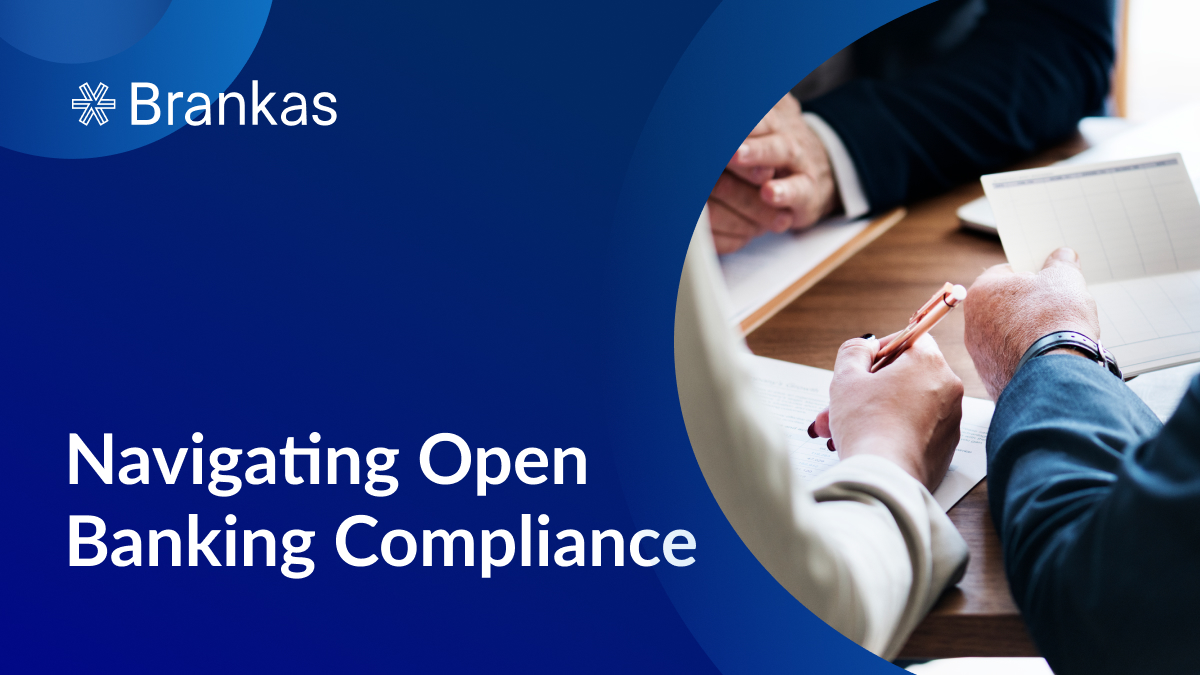Open banking is no longer a distant or hypothetical concept. Fueled by rapid technological advancement and evolving customer preferences, open banking is reshaping the financial industry as we know it. The numbers do not lie; open banking transactions in Asia and the Pacific regions are projected to be valued at $330 billion in 2027. Open banking is also gaining momentum in the Middle East, with the market expected to reach $135.17 billion in 2030.
The core idea of open banking simplified is this: it enables third-party providers (with customer consent) to access financial data via secure application programming interfaces (APIs). This fosters greater competition, enhanced customer experiences, and more tailored financial products and services.
While this innovation is promising, navigating open banking compliance remains a complex challenge. Financial institutions and fintech companies struggle to meet regulatory requirements while meeting customer expectations.
In this article, we’ll explore how to stay compliant with open banking standards and why it’s critical for entities to do so.
What is Open Banking Compliance?
At its core, open banking compliance refers to compliance with the regulatory requirements that govern how financial data is accessed, shared, and protected. These rules ensure that open banking operates securely while giving consumers greater control over their financial information.
However, open banking compliance is more than just a mere checkbox to tick off. The expectation is a genuine commitment to transparency, accountability, and customer empowerment. Businesses prioritizing compliance show that they are active participants in ensuring a seamless and secure financial ecosystem for all. As such, banks and fintech companies are guided by the three key pillars of open banking regulatory compliance:
What Are the Regulatory Requirements for Open Banking?
Open banking regulatory requirements vary by region or country. For instance, Europe observes GDPR and PSD2. Other regions, such as the United States, Australia, and Canada, have their own specific regulatory frameworks. While global regulations for open banking are unique to each jurisdiction, they share a few common goals and generally focus on three key pillars:
1. Data Privacy and Security
Protecting customer data is of utmost importance. Strict data privacy standards prevent unauthorized access and ensure that consumers’ financial information is safeguarded. Notable among these regulations is the General Data Protection Regulation (GDPR).
2. Customer Control
Open banking allows consumers to share their financial data with third-party providers, but only with their consent. This puts the power back in the hands of the customer. For example, the Revised Payment Service Directive (PSD2) mandates financial institutions to give access to their customer data through secure APIs.
3. Third-Party Provider (TPP) Access and Licensing
Regulators require that TPPs be licensed or authorized before connecting to bank APIs. This ensures only trusted and vetted entities can participate in the ecosystem.

The Role of APIs in Open Banking Compliance
Application Programming Interfaces (APIs) are the backbone of open banking. Essentially, they act as bridges that enable data transfer across different systems and software. A well-designed API or open finance platform ensures compliance by implementing security measures, managing data flows, and supporting regulatory requirements across different regions.
Open Banking Regulatory Compliance Across the World
While these principles are universal, the specifics of compliance differ across regions. Europe is widely recognized as the origin of open banking, but key players extend beyond the European Union. Key players include the United Kingdom, Hongkong, and Australia, each adopting their own regulatory frameworks to standardize their financial ecosystems. On the other hand, countries like Japan, India, South Korea, and Singapore are focused on a market-driven approach.
In a regulatory-driven approach, regulatory bodies in the government spearhead open banking. This involves the control and management of APIs. A market-driven approach is a more lenient and supportive one where the government acts as a bridge between financial institutions and third-party providers.
Here’s a closer look at how open banking compliance differs across the world:
Europe
Europe has been at the forefront of the open banking movement since the implementation of the Payment Services Directive 2 (PSD2). PSD2, enacted by the European Union in 2015, paved the way for open banking by requiring financial institutions to grant third-party providers access to client account information via secure APIs.
The United Kingdom
The UK has intensified its commitment to open banking through the Competition and Markets Authority (CMA). It requires nine of the country’s top banks to make their data available. This prompted the establishment of the Open Banking Implementation Entity (OBIE), which produced open banking standards in the United Kingdom. The Financial Conduct Authority (FCA) regulates open banking in the UK.
APAC
Open banking in Asia-Pacific is a mix of government-led mandates and industry-driven initiatives. Australia’s Consumer Data Right (CDR) imposes stringent data-sharing regulations that extend beyond banking to the energy and communication sectors. Singapore’s Monetary Authority (MAS) encourages API-driven approaches but does not require open banking participation. Indonesia, the Philippines, and Thailand have evolving frameworks that prioritize financial inclusion, allowing for greater flexibility in implementation. The problem in APAC is standardization, as each country tailors rules to its specific market needs.
Latin America
Latin American governments are pursuing a market-driven approach to open banking. Various Latin American countries are at varying stages of adopting open banking. Brazil, for example, has played an important role in pushing open banking legislation, providing a phased implementation strategy to guarantee a smooth transition. Mexico has been looking into open banking frameworks to improve the accessibility of financial services, such as direct payment solutions, remittance, and lending.
MENA
The Middle East and North Africa region is embracing open banking at varying adoption rates. For example, Saudi Arabia and Bahrain are leading the way with central bank-driven laws that require institutions to use open API standards and strong security measures. The UAE is taking a more collaborative approach, fostering cooperation between fintechs and banks while avoiding tight mandates. Overall, MENA’s regulatory landscape is focused on balancing innovation and risk management.

United States
The US has a market-led model where banks and fintechs voluntarily cooperate to exchange financial data, in contrast to areas with government-mandated open banking.
Banks, fintechs, and data aggregators are driving adoption in the decentralized US open banking market. Although there isn’t a single governmental authority mandating implementation, compliance focuses on data protection, consumer consent, and API standardization.
Canada
Unlike the US, Canada’s open banking model is government-driven, which aims for a systematic rollout with precise regulatory standards for banks and fintechs. Similar to Europe’s PSD2, compliance initiatives place a high priority on liability frameworks, consumer protection, and secure authentication. The Office of the Privacy Commissioner (OPC) enforces privacy laws, ensuring that financial institutions handle data responsibly under the Personal Information Protection and Electronic Documents Act (PIPEDA).
Ensure Open Banking Compliance with Brankas
With the ever-evolving regulatory landscape, staying compliant with open banking regulations can be a headache. Brankas makes it easier for banks, fintechs, and financial institutions to seamlessly meet compliance requirements while unlocking the full potential of open banking.
Here are reasons to partner with us:
• Tech-led growth with the #1 open finance platform in APAC and MENA
• Market-leading APIs built by top-tier engineers and fully aligned with open finance standards
• Save time and money while building any financial use case with our secure and compliant open banking solutions
Navigating open banking compliance can be complex, but with the right tech stack, financial institutions can stay ahead of regulations while enhancing innovation and customer experience. Learn more about how we can help you achieve open banking compliance effortlessly.
